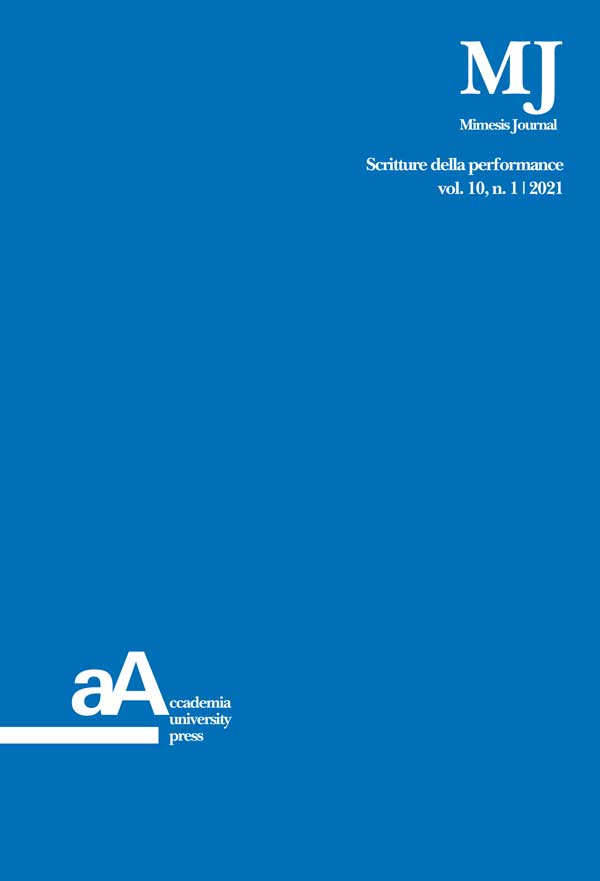Dido and Aeneas: Mark Morris e il dramma di Didone
DOI:
https://doi.org/10.4000/mimesis.2198Abstract
In European Musical Theatre of the modern age, Dido is the imperishable symbol of a woman with many dimensions. The trasposition in dance of her myth, since XVIII century, has confirmed the possibility of countless translations into languages which confirm the value of a current and universal character. Mark Morris choreography (1989), on Henry Purcell’s music for Dido and Aeneas (1689), moves between race and gender. It mixes, in the roles, men and women into an indefinite and mixed gender. Dido is interpreted by a man; her identification with the Sorceress seems to stage the modernity of a woman with a dual character. Solitude is in the center of Morris construction. In the movements of the Queen he mixes Eastern and Western movements and ancient pantomime into a gender neutrality which seems to recall Aeneislines 569-570 (…Varium et mutabile semper/Femina): here, the use of the neutral recalls Morris’ Dido, where the renunciation of femininity seems to be a possible way of reading. Her body is a meeting place of different cultures, embodied in to a indefinite gender. Morris could be seen as a real “translator” of Vergilian Aeneis and this aspect could allow to speak about a kind of “choreographic intertextuality”, in such a different dimension of the tale. In this paper I am going to underline how the core points of Vergilian drama are “translated” into Morris’ dance, through music and gestures, recreating gender dynamics of Aeneis IV.


